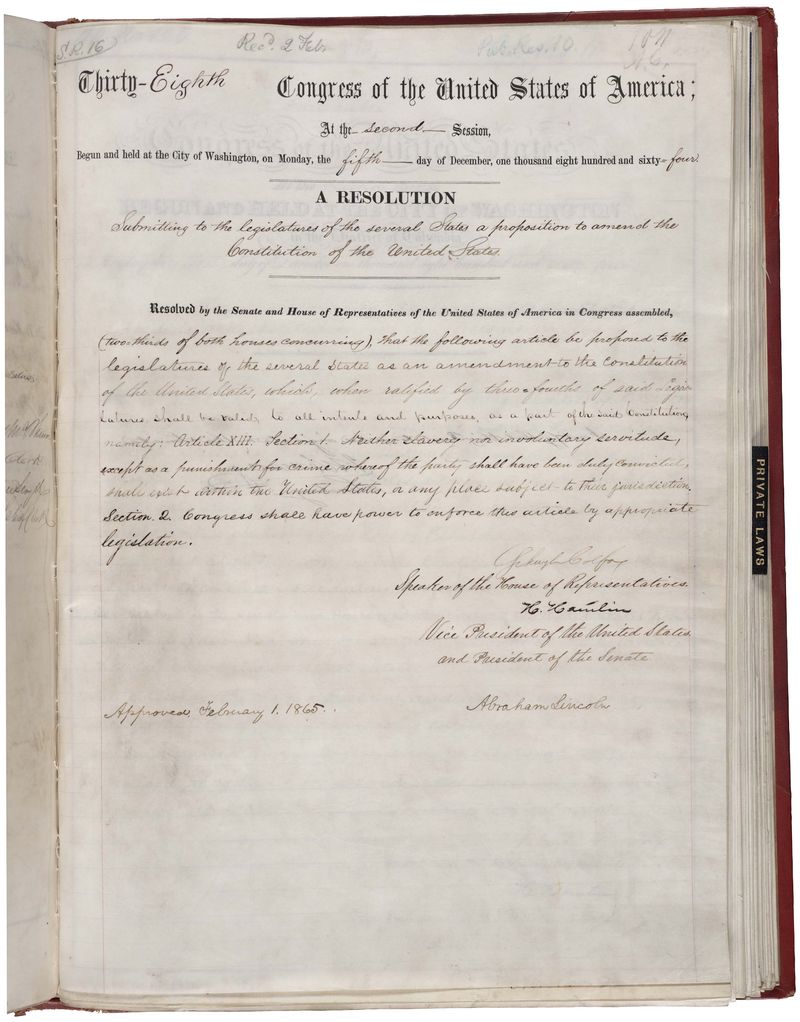The abolition of slavery in the United States, marked by the ratification of the 13th Amendment on December 18, 1865, stands as a pivotal moment in American history, fundamentally reshaping the nation’s social, economic, and political landscape. This historical milestone culminated from a complex interplay of moral, economic, and political factors and had far-reaching consequences that echoed through the subsequent decades.
The journey towards the 13th Amendment began long before its ratification. Slavery had been a contentious issue in the United States since its inception, with debates and conflicts between abolitionists and those who supported the institution of slavery. The moral argument against slavery was led by abolitionists who viewed the practice as inherently inhumane and contradictory to the principles of liberty and equality enshrined in the Declaration of Independence.
Economically, the North and South were diverging rapidly. The Northern states, embracing industrialization, did not rely on slave labor as much as the agrarian South, where slavery was integral to its economy, particularly in the cultivation of cotton. This economic disparity contributed to growing tensions between the two regions.
The political landscape of the time was dominated by the struggle to maintain a balance of power between slave and free states. The Missouri Compromise of 1820 and the Compromise of 1850 were among the many efforts to maintain this delicate balance. However, the Kansas-Nebraska Act of 1854, which allowed new territories to decide on the legality of slavery through popular sovereignty, intensified the conflict.
The election of Abraham Lincoln in 1860, who opposed the expansion of slavery, was the final straw for many Southern states, leading to the secession of eleven states and the onset of the Civil War. Initially, the war was not explicitly fought over slavery, but as it progressed, the moral imperative to abolish slavery became increasingly intertwined with the Union’s war aims.
Lincoln’s Emancipation Proclamation of 1863, which declared all slaves in Confederate-held territory free, was a crucial step towards the 13th Amendment. It redefined the war as not just a battle to preserve the Union but also a moral crusade against slavery.
Following the Union victory in April 1865, the push for the formal abolition of slavery gained momentum. The 13th Amendment, which officially abolished slavery throughout the United States, was passed by Congress in January 1865 and ratified by the required number of states by December 18, 1865.

The amendment’s ratification was a monumental victory for the abolitionist movement and a significant step towards fulfilling the nation’s founding ideals of liberty and equality. However, its implementation was fraught with challenges. The post-war Reconstruction era saw significant resistance in the South to the integration of freed slaves into society. Black Codes, Jim Crow laws, and other forms of institutionalized racism emerged to maintain white supremacy and limit the freedoms of African Americans.
The abolition of slavery and the ratification of the 13th Amendment were crucial first steps in the long and ongoing journey towards racial equality in the United States. It set the stage for further civil rights advancements, including the 14th and 15th Amendments, which granted citizenship and voting rights to African Americans.
The end of slavery also transformed the Southern economy and social structure, leading to significant shifts in labor practices and societal norms. While the 13th Amendment did not immediately result in equality for African Americans, it laid the foundation for future generations to continue the fight for civil rights and social justice.
The ratification of the 13th Amendment on December 18, 1865, marked a defining moment in American history. It was the culmination of decades of moral and political struggle and signified a profound transformation in the nation’s identity. Its legacy continues to influence American society, reminding us of the ongoing quest for equality and justice for all.
Leave a comment